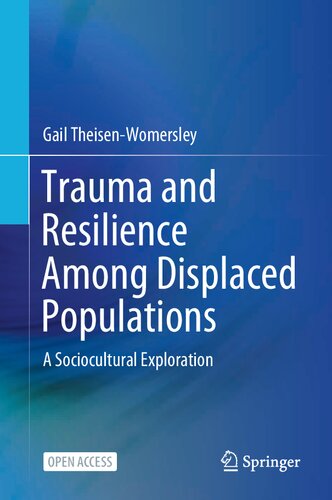تروما و تاب آوری در میان جمعیت آواره: یک کاوش اجتماعی فرهنگی ۲۰۲۱
Trauma and Resilience Among Displaced Populations: A Sociocultural Exploration 2021
دانلود کتاب تروما و تاب آوری در میان جمعیت آواره: یک کاوش اجتماعی فرهنگی ۲۰۲۱ (Trauma and Resilience Among Displaced Populations: A Sociocultural Exploration 2021) با لینک مستقیم و فرمت pdf (پی دی اف)
| نویسنده |
Gail Theisen-Womersley |
|---|
| تعداد صفحهها |
305 |
|---|---|
| نوع فایل |
|
| حجم |
5 Mb |
| سال انتشار |
2021 |
89,000 تومان
معرفی کتاب تروما و تاب آوری در میان جمعیت آواره: یک کاوش اجتماعی فرهنگی ۲۰۲۱
این کتاب با دسترسی آزاد با تأکید بر موقعیت اجتماعی و سیاسی افراد، درک غنی از آسیب های تاریخی، گروهی، فرهنگی و هویتی را ارائه می دهد. از این رو، به جای تلقی افراد بی خانمان به عنوان «قربانیان منفعل» آسیب دیده، دیدگاهی اجتماعی-اکولوژیکی در مورد تروما ارائه می دهد.
گستردگی پدیده تروما در میان جمعیت های آواره باعث شده است تا به حوزه ای برای تحقیقات به موقع و انتقادی تبدیل شود و این کتاب افزوده مهمی به ادبیات است. یک مرور کلی از چارچوب های نظری مربوط به تروما و مهاجرت – بررسی عوامل خطر و تاب آوری، میزان شیوع PTSD، و درک تروما فراتر از تشخیص های روانپزشکی ارائه می دهد. تجارب تروما را از منظر فرهنگی-اجتماعی (شامل آسیب های جمعی، آرزوهای جمعی و تاب آوری جمعی) به تصویر بکشید. این برنامه برای متخصصان کار با جمعیت های آواره در محیط های پیچیده نهادی، قانونی و بشردوستانه ارائه می دهد. این شامل مطالعات موردی بر اساس تجربه 10 ساله نویسنده در کار در زمینه های اضطراری با جمعیت آواره در 11 کشور در سراسر جهان است. این کتاب داده های منحصربه فردی را ارائه می کند که توسط خود نویسنده جمع آوری شده است، از جمله مصاحبه با بازماندگان حملات داعش، یک پناهجو در سوئیس که در اعتراض به روش های پناهندگی خود را به آتش کشید، و زنانی از قبیله مورل در سودان جنوبی که آسیب دیده اند. قسمتی از غش های دسته جمعی. این یک منبع مهم برای دانشگاهیان و متخصصانی است که در زمینه مطالعات تروما و با گروه ها و افراد آسیب دیده کار می کنند.
This open access book provides an enriched understanding of historical, collective, cultural, and identity-related trauma, emphasising the social and political location of human subjects. It therefore presents a socio-ecological perspective on trauma, rather than viewing displaced individuals as traumatised “passive victims”.
The vastness of the phenomenon of trauma among displaced populations has led it to become a critical and timely area of inquiry, and this book is an important addition to the literature. It gives an overview of theoretical frameworks related to trauma and migration—exploring factors of risk and resilience, prevalence rates of PTSD, and conceptualisations of trauma beyond psychiatric diagnoses; conceptualises experiences of trauma from a sociocultural perspective (including collective trauma, collective aspirations, and collective resilience); and provides applications for professionals working with displaced populations in complex institutional, legal, and humanitarian settings. It includes case studies based on the author’s own 10-year experience working in emergency contexts with displaced populations in 11 countries across the world. This book presents unique data collected by the author herself, including interviews with survivors of ISIS attacks, with an asylum seeker in Switzerland who set himself alight in protest against asylum procedures, and women from the Murle tribe affected by the conflict in South Sudan who experienced an episode of mass fainting spells. This is an important resource for academics and professionals working in the field of trauma studies and with traumatised groups and individuals.



